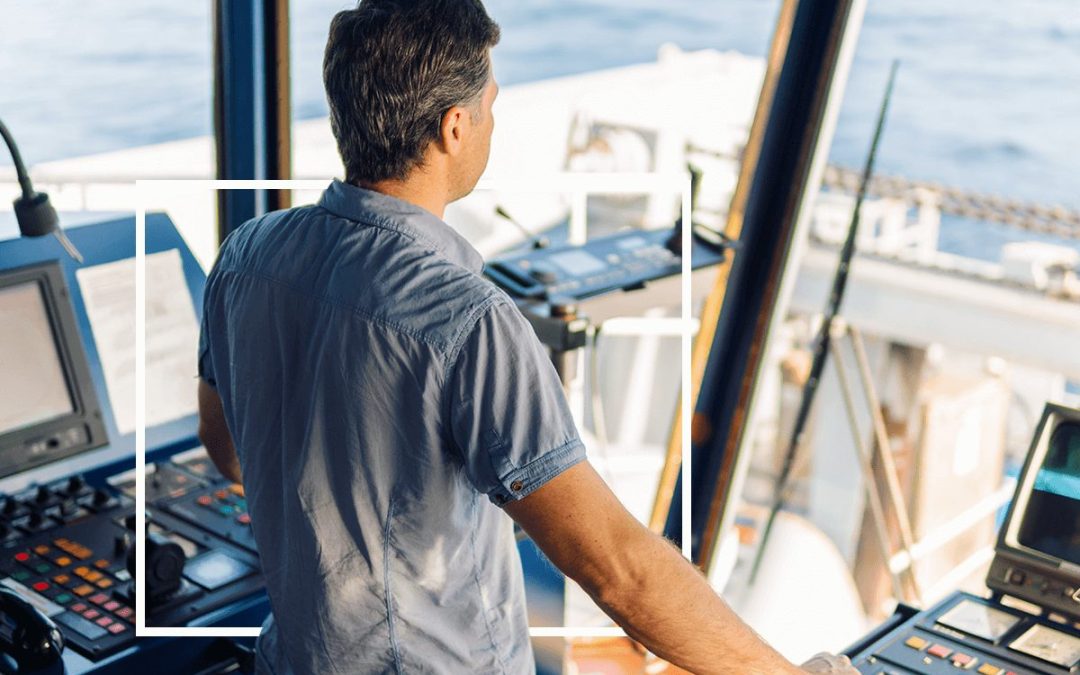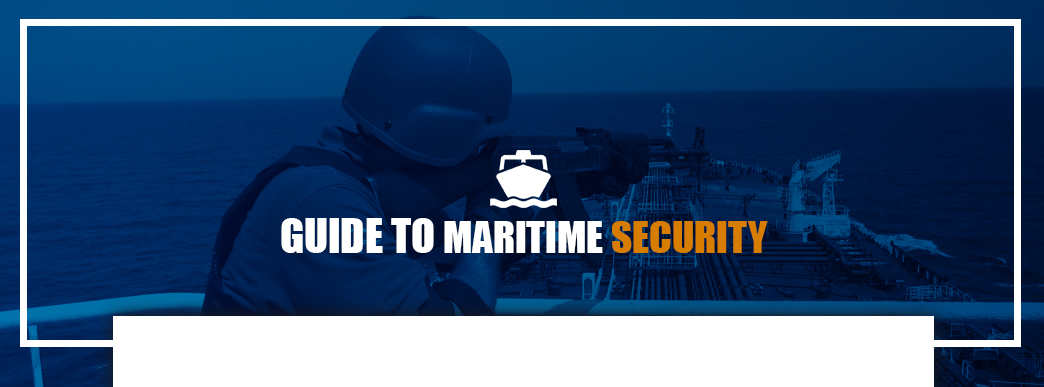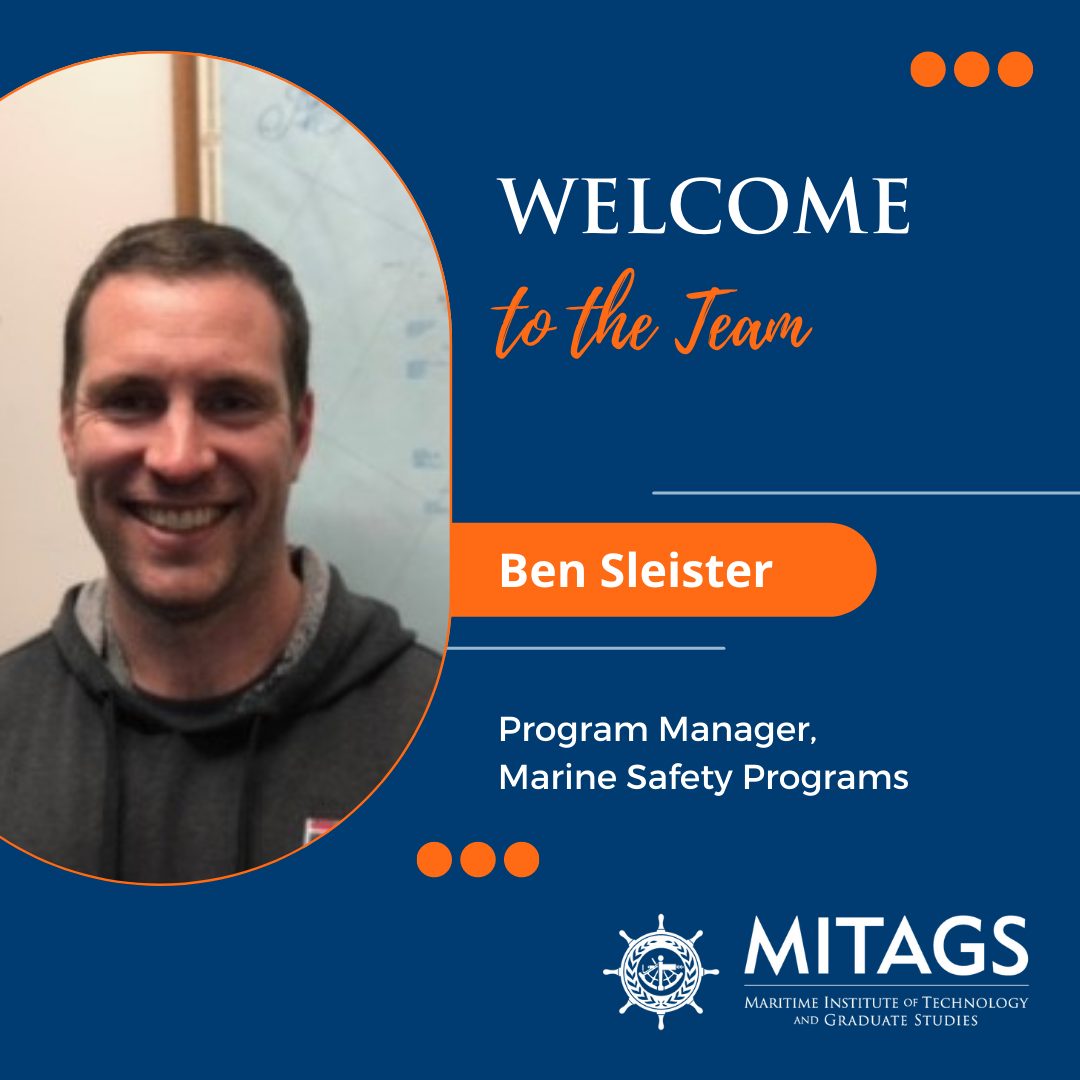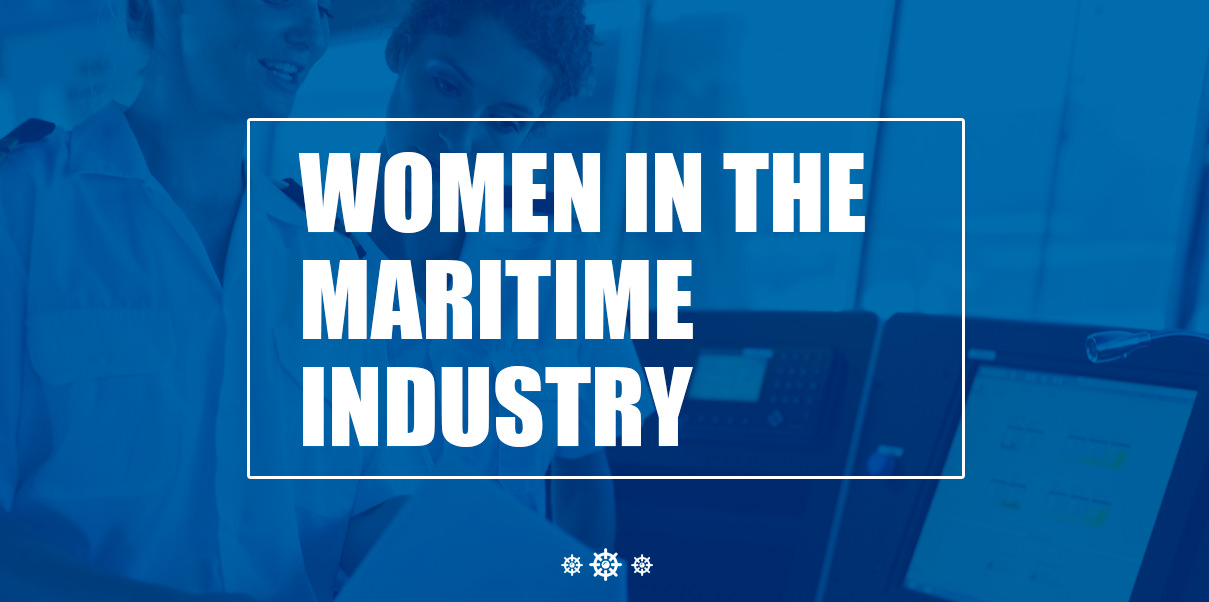If you love being out on the water and want to learn how to advance your career in the maritime industry, getting your captain’s license can be a great decision. Whether you’re a recent high school graduate, a maritime professional or someone looking to pivot into the industry, having a commercial captain’s license opens up all kinds of opportunities within the merchant mariner world.
There are certain requirements you must meet in order to obtain your captain’s license, including having a certain amount of sea time, meeting qualifications, and choosing the right maritime training course. A United States Coast Guard (USCG) approved maritime school will help you prepare with the right training courses and gain practical, real-world skills to become a better ship captain.
Throughout this article, we’ll cover everything you’ll want to know about the Captain’s License:
- Who Needs a Captain’s License?
- How to Become a Ship Captain
- Types of Ship Captain Licenses
- How to Choose a License Tonnage
- Types of Endorsements
- FAQ About Getting a Commercial Captain’s License
- Qualifications and Application Requirements for a Captain’s License
- The Benefits of Getting Your Captain’s License
- How to Renew Your Captain’s License
- What Are You Waiting For? Contact MITAGS to Start Your Captain Training Today
Who Needs a Captain’s License?
In short — anyone who wants to get paid to direct a ship needs a captain’s license.
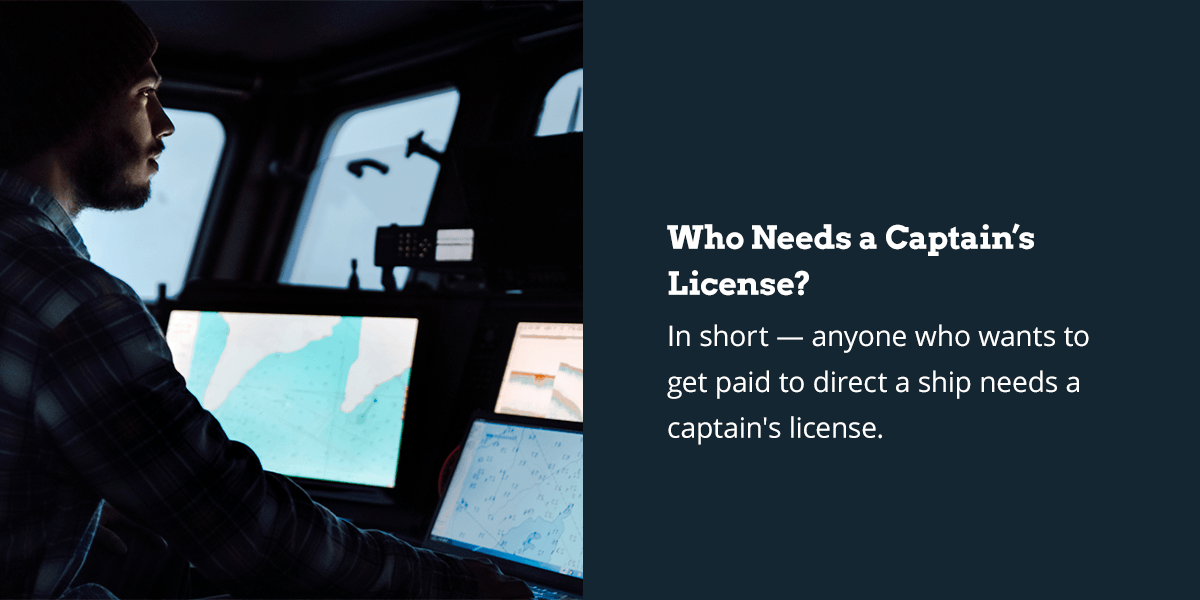
The U.S. Coast Guard requires the operator of a vessel carrying passengers-for-hire, cargo, goods or materials to have a ship captain’s license. This legal barrier to entry is a significant advantage to those who do have a license. If anyone who knew how to operate a vessel could become a ship captain, competition would be fierce. Fortunately, you can find plenty of job opportunities as a ship captain for commercial vessels
If you’re considering enrolling in a USCG-approved captain’s license course to get your master’s or six-pack license, you probably have some questions about the requirements. It can be a bit confusing, but this guide helps you through the process and answers some common questions.
How to Become a Ship Captain
If you want to know how to get your marine captain’s license, you’ll need to complete the following fields:
- Experience: The first step in becoming the captain of any vessel is to gain experience — either on your own ship or as a crew member on someone else’s. You don’t have to be a paid crew member to count your sea time toward a credential, as long as you’re aboard a registered vessel and the owner is willing to confirm your time. Either way, it’s best to accumulate crewing experience in your prospective industry before you get your license. For specific ships especially — like fishing or parasailing — most people start as a Deckhand and work their way up. This way, you understand all operations of your vessel and are a better captain when the time comes.
- Passing a USCG exam: Passing a U.S. Coast Guard-approved exam is one of the most important steps in getting your captain’s license and operating commercial vessels. To pass this exam, you’ll need to study topics like deck general, rules of the road and marlinspike seamanship. The best way to prepare for a USCG test is by getting an education through a USCG-approved captain’s license course at a maritime school. These programs provide the specific resources, materials and study tools you need for the exam.
- Completing certificates, forms and fees: After completing your class, you’ll submit an application package to the Coast Guard. It includes a medical examination, proof of drug screening enrollment and sea service forms.
Types of Ship Captain Licenses
Before we get into the specific requirements to obtain a captain’s license, you should know a few of the different kinds for which you may want to apply. The license you qualify for depends on your ship experience. Depending on where you can operate and the tonnage of ships you can operate, you’ll be applying for one of the following three licenses.
1. Operator of Uninspected Passenger Vehicles (OUPV)
Commonly called a 6-pack license, the Operator of Uninspected Passenger Vessels credential allows you to sail with up to six passengers on board an uninspected vessel 100 tons or less. Uninspected means the Coast Guard doesn’t have to inspect your ship before you can operate, and the ship’s design and safety specifications aren’t as strict because the vessel can only operate on U.S. domestic waters.
The Coast Guard issues 6-pack captain’s licenses for a specific range that reflects your sea service — either Inland, Inland and Great Lakes, or Near Coastal, which allows you to go up to 100 miles offshore. For a 6-pack license (OUPV), the requirement you need to achieve is 360 days of sea time, 90 of which must be in the range for which you apply. For example, the Near Coastal OUPV requires at least 90 days on near coastal or ocean waters. You must have completed at least 90 days of this experience within the last three years.
Keep in mind that non-U.S. citizens can still apply for an OUPV license. However, there will be tonnage limits and vessel restrictions.
2. Master Inland
An Inland license allows you to operate inspected and uninspected ships within the designated Inland waters boundary line — essentially Great Lakes and harbors. You can also use this license to work as a mate on near-coastal vessels, as long as you can document 180 days of sea time in the ocean. You need to provide documentation of 360 days of sea time on any waters, with 90 on the Great Lakes if you wish to operate ships there, too.
You must also have at least 90 days of sea time from within the last three years to apply. The amount of tonnage you can operate on a vessel — 25, 50 or 100 tons — will depend on your experience. However, if you plan to operate an inspected vessel, you’re also required to have a sailing endorsement in addition to your Master Inland license, which requires 180 days on a sailing vessel.
3. Master Near Coastal
With this type of license, you can operate commercial vessels of 25, 50 or 100 tonnages — the maximum — and take more than six paying people on board as long as you meet the requirements. A Near Coastal license allows you to operate inspected and uninspected vessels on inland waters and up to 200 miles off the U.S. coast.
To obtain this license, you must provide documentation of a minimum of 720 days of sea time, 360 of which must be on near-coastal waters. You must complete at least 90 days of this time within the last three years of the day you apply. The tonnage you receive on your license will be determined based on your sea time and experience.
How to Choose a License Tonnage
The tonnage of license you receive is also dependent on your maritime experience. A 100-ton license requires 180 days aboard ships over 51 gross tons or 360 days aboard ships over 34 gross tons.
A 50-ton license requires 180 days on ships over 26 gross tons if your service began after March 2014. If your sea service started before March 2014, you only need one day on a vessel over five gross tons. If you don’t meet the requirements to make the 50-ton cutoff, you’ll receive a 25-ton license.
Figure out the gross tonnage of the ships you crewed on by either contacting the vessel owners or calculating it yourself with the USCG guide to tonnage.
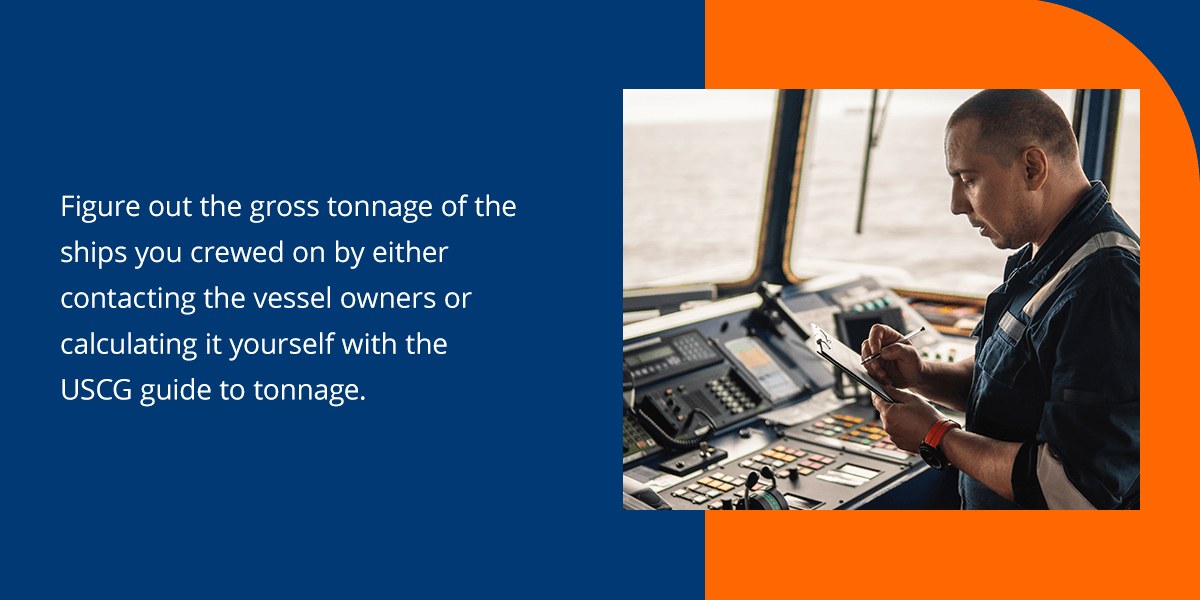
Types of Endorsements
In addition to your license, you will need endorsements for some vessels. A few common ones include:
- Assistance towing endorsement: To work for a marine company that tows other vessels, like Seatow or Vessel Assist, you’ll need an assistance towing endorsement. It doesn’t require any towing-specific experience, but you do have to pass a short written exam that’s included in most captain’s license courses.
- STCW endorsement: If you’re planning on working aboard vessels over 72 feet long or on international voyages, you may need to first take an STCW course in addition to your captain’s license course. STCW stands for The Standards of Training, Certification and Watchkeeping and covers everything from Basic Training, Fire Fighting and Damage Control to using an Electronic Chart Display Information System (ECDIS) and both Terrestrial and Celestial navigation.
It’s best to apply for as many endorsements as you can on your original merchant mariner credential. The more you get, the more time you save not having to upgrade later.
FAQ About Getting a Commercial Captain’s License
If you’re researching how to become a commercial ship captain, you likely have many questions about the process and if it’s a career choice you should make. Here are some common questions about getting your captain’s license.
1. Is Being a Captain the Right Move for Me?
If you don’t have a lot of experience on the water, you might be wondering if being a captain is right for you — especially if you’re young. For some reason, there’s an assumption that all captains are salty old men with white beards, which just isn’t true. There’s a wide range of ages within all levels of the merchant mariner industry — both male and female.
One great thing about having your captain’s license is that as long as you’re professional and have the skills to back up your credentials, you can land some excellent jobs. Questions? Contact a school advisor.
2. How Long Is A Captain’s License Good For?
After passing your exam and requirements, your captain’s license is valid for five years, after which it must be renewed. You can renew your license up to six months in advance. However, if you’re unable to renew your commercial captain’s license during that timeframe, you can rely on the Coast Guard’s one-year grace period. During this time, you can apply for renewal after the five-year period ends but you cannot use the license professionally.
3. What’s the Annual Salary of a Captain?
According to the United States Bureau of Labor Occupational Employment and Wage Statistics of 2021, there were about 33,500 captains in the U.S., and their mean annual salary is about $98,000. However, some ship captains made upwards of $160,000.
Working aboard container ships and private superyachts is the most lucrative in the industry. The highest-paying states for captains, mates and pilots of water vessels are Louisiana, Florida, Texas, California and Virginia, where the annual mean wage ranges from $89,000 to $113,000.
4. How Long Does It Take to Get Your Captain’s License?
The timeline for getting your commercial captain’s license is different for everyone, but it generally takes a few months. For starters, if you don’t have quite enough experience under your belt, you would need to reach the required amount of sea time before you can even apply.
From there, the entire process of taking the USCG captain’s license course can take anywhere from a few days to a few months to complete, depending on your schedule and availability to study. Finally, you can apply for the license, which the Coast Guard will review within a period of four to six weeks. If approved, you will receive your license in the mail and can operate officially.
5. How Much Does It Cost to Get Your Captain’s License?
The overall cost of getting your captain’s license to operate commercial vessels can be anywhere from $500 to $800 or more depending on the course you choose. These costs will include your exam expenses, license requirements and additional fees associated with your license application.
6. How Hard Is It to Get Your Captain’s License?
Just as with any other important exam, studying for your captain’s license can be daunting, but you can achieve it by choosing the right training center to advance your career. The process is pretty straightforward, but it requires plenty of preparation, review and documentation to ensure you get approved once you pass the test. If you want to successfully pass the written examination to earn your commercial captain’s license, a USCG-approved course with high-quality training and teaching techniques can help properly prepare you for the test.
Qualifications and Application Requirements for a Captain’s License
Now that you know about licenses and endorsements, we’ll go over the specific requirements you’ll need to receive your credential. Here’s what to include in your application to the Coast Guard.
Proof of Age
To become an OUPV, you must be at least 18 years old. To become a Master, you must be 19 years old. However, if you wish to complete all the requirements when you’re 18, most of the certificates you need are valid for one year, so you can send in your application as soon as you turn 19.
Time at Sea
You must have at least 360 days of experience total to obtain a Captain’s License. Ninety of these days must be within the last three years.
Sea Service Forms
Fill out your sea service forms and have the owner or manager of the vessel confirm your time. One day of sea service is equal to eight hours working aboard a vessel — this doesn’t include overtime. You can count sea service from age 16 onward. In all cases, you need 90 days of your sea service to be within the last three years. After you’ve compiled all your sea time, confirm you have enough to qualify for your desired license. Double-check your forms with the Coast Guard guide to documenting sea service.
A Completed USCG-Approved Exam
Again, the easiest way to pass your license exam is by attending a USCG-approved maritime training school. Once you pass the course, you receive a certificate of completion, which is valid for one year.
A Transportation Worker Identification (TWIC) Card
The TSA issues TWIC cards, and you need one for any merchant mariner credential. You’ll have to pay a fee and pass a government background check to receive your card. For additional information and how to apply, visit the TWIC website.
A Medical Examination
Before you make an appointment with a doctor, use the USCG medical examination guide to avoid common errors the Coast Guard will reject. Choose a medical examiner that is familiar with USCG physicals. A few of the portions of the physical require careful attention inexperienced doctors may miss.
Proof of Enrollment In a Drug Screening Program
Regardless of the type of license or merchant mariner credential you are trying to obtain, you will be required to enroll in a random drug screening program. To receive your license, you will need proof of enrollment in one of these programs, which some marine employers offer.
Fill out the application form for your captain’s license carefully. Be sure to specify which range and tonnage — unless it’s OUPV — of license you’re applying for.
A Photo ID
Once you have your TWIC card, this will satisfy the requirement for a photo ID. It will also be the photo that appears on your license.
Proof of Application Fees
Be sure to pay the appropriate fees through pay.gov. Consult the USCG payment webpage to determine what you need to pay for your license evaluation. It’s always a good idea to print the confirmation page after you pay.
A USCG Oath
For all original merchant mariner credentials, you’re required to take a supervised USCG oath. You can do this at an approved Coast Guard facility, such as a regional exam center or maritime training school.
First Aid and CPR Certificate
For your original license, you need to be First Aid and CPR-certified. Courses are frequently available no matter where you live, and most are affordable. You can typically complete the course in one day.
Proof of Residency (OUPV Only)
You must prove permanent residency with a valid state ID or green card if you’re applying for your OUPV license.
Time to Submit
Before submitting your application, use the USCG acceptance checklist to double-check that you’ve satisfied all the requirements. You can then either mail in your application or speed things up by scanning your documents and submitting them through the Coast Guard’s website. The issuance process usually takes one to three months.
The Benefits of Getting Your Captain’s License
If you feel a need to be on the water, then being a ship captain is the best job for you. You have more responsibility than a crew member, but once you’re comfortable with your vessel, captaining becomes second nature. Plus, you get to skip out on most of the manual labor the on-deck crew must handle.
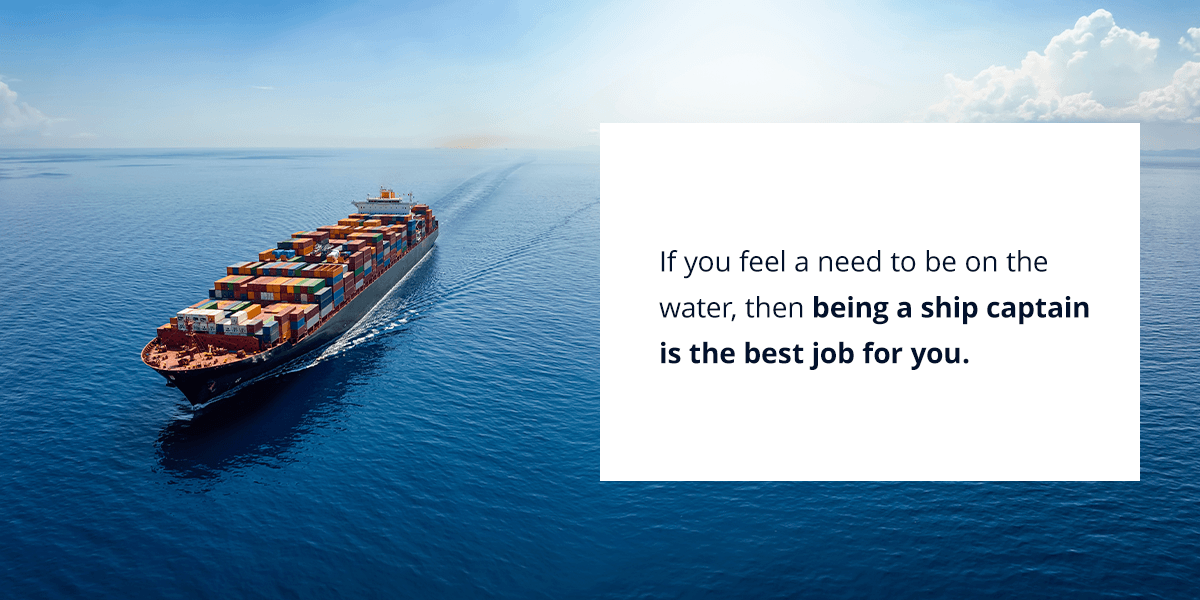
A few more reasons the life of a captain might be for you include:
1. Job Opportunities
As we said earlier, the barriers to entry in the marine world keep competition manageable. The maritime community is surprisingly small in some harbors, and once you get into the workforce, there can be a lot of job opportunities — captains tend to help each other out.
2. Travel
Being a captain in specific industries can lead to some unbelievable — and free — traveling. If you work your way up to being the captain of commercial vessels, who knows where you might get to travel and what you might get to see out on the water
3. Free Food and Accommodation
As long as you’re aboard, your meals won’t cost you a dime. Also, if you work on a ship that goes on extended trips, you have free accommodation, which can save you a lot of money in living expenses for the year.
4. Career Options
There are many career paths within the merchant marine industry, and you can find one that suits you best. Becoming a captain of a commercial vessel that carries cargo, goods and materials, for example, can provide you with a leadership position that makes you feel fulfilled as you oversee your own crew and ship functions.
5. Unique Work Schedule
Many marine industries have unique work schedules if you’re looking to avoid the typical 9 a.m. to 5 p.m. agenda. Some vessels, like container ships, even operate on a time-on, time-off basis. This concentrated work schedule means you might be aboard for weeks or months, but then you have extended periods of time off to relax, travel or do whatever you like.
6. Money
If you get your license, you can start making decent money rather quickly. You also earn more cash than you do as an unlicensed crew member — even if you take another job as a crew member after you’re a captain, you’re often paid a higher wage just because you are a licensed merchant mariner.
7. Excitement
In addition to the travel opportunities, every day as a captain is its own adventure. Your surroundings are always changing, and every day is unique.
8. Freedom
Being on the water is a benefit in and of itself. If you decide to turn to the maritime industry for a career, you can skip the cubicle life and have the ocean as your office. You get to work outside, be more active and feel like you got out into the world each day. Not to mention, you’ll experience countless precious moments like watching the sun sink into a red horizon or running with a pod of dolphins that make you think to yourself, “Am I really getting paid for this?”
How to Renew Your Captain’s License
Once you receive your captain’s license, we highly recommend not letting it expire. Even if you don’t plan on using it in the near future, it’s still a good idea to keep renewing it — and you only have to do it every five years. If you let it expire and then decide that you want to start operating ships again, you’ll have to satisfy all of the Coast Guard requirements for getting a captain’s license from scratch.
Renewing your license is easy. You will need:
- 360 days of sea service within the last five years or a refresher course through a USCG-approved training school. These refresher courses can take as little as one day and cover Rules of the Road, Deck General and Deck Safety.
- A completed application form for renewal — this is the same form you use to get your original license, so be sure to specify you’re renewing yours.
- DOT drug testing enrollment — with proof of a test within the last six months.
- A USCG mariner medical examination — the same type as for your original license.
- Payment of fees through the USCG website.
If you do let your license expire, there is a one-year grace period in which you can renew it without having to complete the full USCG exam again. Even if you decide to pursue another career, many people use their captain’s license after retirement. It’s a solid way to make some extra money and keep yourself busy on the water.
What Are You Waiting For? Contact MITAGS to Start Your Captain Training Today
A captain’s license is an excellent foot in the door to the merchant mariner world, as it shows marine employers you’re competent and committed to the industry. It can lead to well-paying opportunities and is one of the most exciting career paths out there.
If you have enough sea service and are about to take the next step, enrolling in a USCG-approved training course is the best way to go. Experienced teachers can give you the tools you need to pass your exam and walk you through the application process. They’ll use hands-on techniques to help you learn practical skills that will prepare you for a career as a captain.
The Maritime Institute of Technology and Graduate Studies (MITAGS) is a vocational training center for aspiring captains and other maritime professionals looking to expand their careers. Our training involves the most innovative, practical techniques and technologies, and our passing students all leave with the tools and knowledge they need to succeed as a captain.
For more information about our maritime courses, contact MITAGS today — we’re more than happy to help.

